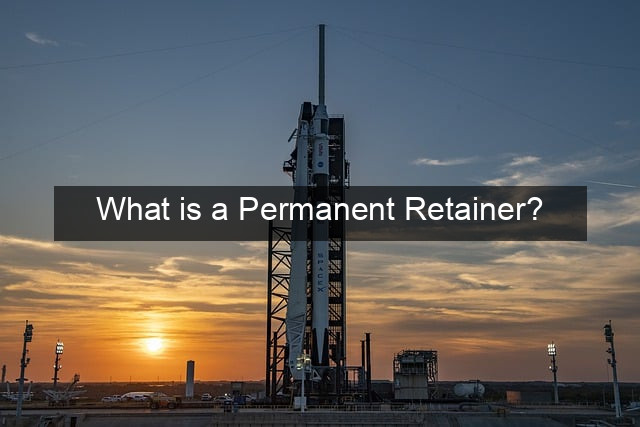What is a Permanent Retainer?

What is a Permanent Retainer?
A straight, confident smile is often the desired outcome of orthodontic treatment. But achieving that perfect alignment isn’t the finish line. Maintaining it is. That’s where permanent retainers come into play. These discreet devices, bonded behind your teeth, work tirelessly to hold your newly straightened teeth in their ideal positions, preventing them from shifting back over time. Imagine investing time and resources into braces or aligners, only to see your teeth gradually revert to their previous positions. A permanent retainer acts as a safeguard against this potential relapse, offering long-term stability and peace of mind. While they might sound daunting, permanent retainers are surprisingly comfortable and unobtrusive, becoming an almost invisible part of your smile’s success story.
This comprehensive guide will delve into the world of permanent retainers, exploring their benefits, potential drawbacks, maintenance requirements, and everything else you need to know to make an informed decision about this valuable orthodontic tool. We’ll discuss the different types available, the procedure for placement and removal, and address common concerns patients often have. By the end, you’ll have a clear understanding of whether a permanent retainer is the right choice for you, empowering you to maintain that stunning smile you’ve worked so hard to achieve.
Types of Permanent Retainers
Fixed Wire Retainers
The most common type of permanent retainer is the fixed wire retainer. This consists of a thin, solid wire, typically made of stainless steel or a flexible, coated wire, custom-fit to the lingual (tongue-side) surface of your teeth. It’s bonded to your teeth using a special dental adhesive, ensuring a secure and stable hold. Fixed wire retainers are incredibly effective in preventing tooth movement, particularly in the lower front teeth, where relapse is most common. They’re durable and require minimal maintenance, making them a popular choice for long-term retention.
The flexibility of the wire allows for slight tooth movement during chewing and speaking, promoting natural jaw function. This type of retainer is usually bonded to the six lower front teeth, from canine to canine. While highly effective, it can make flossing slightly more challenging, requiring the use of a floss threader or specialized floss.
Fixed wire retainers are typically recommended for patients who have undergone significant orthodontic correction or have a history of severe crowding or spacing issues. Their discreet placement makes them virtually invisible, allowing you to enjoy your straightened smile without anyone knowing you have a retainer.
Bonded Retainers
Similar to fixed wire retainers, bonded retainers also use a thin wire, but they can be bonded to either the front or back of the teeth. This offers some flexibility depending on the patient’s specific needs and the orthodontist’s recommendations. Bonded retainers are also custom-made to fit the contours of your teeth, ensuring a comfortable and secure fit. They are typically made of the same materials as fixed wire retainers, offering similar durability and longevity.
The advantage of bonded retainers is their versatility. They can be used on either the upper or lower arch and can be customized to address specific areas of concern. For example, if a patient is prone to relapse in just a few teeth, the bonded retainer can be applied only to those specific teeth. This targeted approach can be highly effective in preventing unwanted shifting.
While bonded retainers offer excellent retention, they can, like fixed wire retainers, make flossing a bit more intricate. However, with practice and the right tools, maintaining good oral hygiene with a bonded retainer becomes easy.
Living with a Permanent Retainer
Oral Hygiene
Maintaining good oral hygiene with a permanent retainer is crucial. While the retainer itself doesn’t attract plaque, food particles can easily become trapped around the wire and the teeth. This can lead to plaque buildup, gum inflammation, and even cavities if not properly addressed.
Regular brushing and flossing are essential. Using a floss threader can help navigate the wire and effectively clean between the teeth. Interdental brushes are also helpful for removing debris around the retainer. Rinsing with an antimicrobial mouthwash can further enhance oral hygiene and help prevent bacterial growth.
Regular dental checkups are also important. Your dentist can professionally clean your teeth and retainer, removing any stubborn plaque or tartar buildup. They can also assess the condition of your retainer and identify any potential issues early on.
Dietary Considerations
Certain foods can pose a risk to your permanent retainer. Hard, sticky, or crunchy foods can potentially dislodge or damage the wire. Avoid biting into hard candies, ice, or chewing gum. Sticky foods like caramel and toffee can also get stuck around the retainer, making cleaning difficult.
Opt for softer foods that are less likely to cause problems. Cut hard fruits and vegetables into smaller pieces before eating. Chewing carefully and mindfully can also help protect your retainer and prevent accidental damage.
If you do experience any discomfort or notice any looseness in your retainer, contact your orthodontist immediately. Prompt attention can prevent further complications and ensure the continued effectiveness of your retainer.
Potential Issues and Solutions
Breakage and Repair
While permanent retainers are designed to be durable, breakage can occasionally occur. Biting into hard foods, accidental trauma, or even grinding your teeth can potentially damage the wire. If you suspect your retainer is broken, contact your orthodontist immediately.
In most cases, a broken retainer can be repaired. Your orthodontist will assess the damage and determine the best course of action. They may be able to repair the existing retainer or recommend replacing it with a new one.
Ignoring a broken retainer can lead to tooth movement and compromise the results of your orthodontic treatment. Prompt repair is essential to maintain the stability of your teeth and prevent relapse.
Speech Impediments
Some patients may experience minor speech impediments immediately after getting a permanent retainer. The presence of the wire behind the teeth can affect tongue placement and airflow, potentially causing lisping or slight difficulty pronouncing certain sounds.
These speech impediments are usually temporary and resolve as the tongue adapts to the presence of the retainer. Practicing speaking and reading aloud can help accelerate the adaptation process.
If speech difficulties persist, consult your orthodontist. They can offer guidance and suggest exercises to help improve speech clarity.
Conclusion
Permanent retainers offer a valuable solution for maintaining the results of orthodontic treatment. They provide long-term stability, preventing teeth from shifting back to their original positions. While they require some adjustments in oral hygiene and dietary habits, the benefits of a permanently straight smile often outweigh the minor inconveniences.
Understanding the different types of permanent retainers, their maintenance requirements, and potential issues empowers you to make an informed decision. By working closely with your orthodontist and following their recommendations, you can ensure the long-term success of your orthodontic journey and enjoy a confident, beautiful smile for years to come. Remember, a permanent retainer is an investment in your smile’s future, offering a discreet and effective way to preserve the results you’ve worked so hard to achieve.
Frequently Asked Questions
- How long do permanent retainers last? With proper care and maintenance, permanent retainers can last for many years, even decades. Regular dental checkups are essential to monitor their condition and address any potential issues early on.
- Can permanent retainers be removed? Yes, permanent retainers can be removed by an orthodontist. The procedure is relatively simple and involves carefully detaching the wire from the teeth. However, removing a permanent retainer can increase the risk of tooth relapse.
- Are permanent retainers painful? The placement of a permanent retainer is typically painless. You may experience some minor discomfort or pressure immediately after the procedure, but this usually subsides quickly.
- Do permanent retainers affect eating? While you may need to adjust your eating habits initially, permanent retainers generally do not significantly affect eating. Avoiding hard, sticky, and crunchy foods is crucial to prevent damage to the retainer.
- Is a permanent retainer right for me? The suitability of a permanent retainer depends on your individual orthodontic needs and the recommendations of your orthodontist. Factors such as the extent of tooth movement, the risk of relapse, and your oral hygiene habits will be considered.
- What is the cost of a permanent retainer? The cost of a permanent retainer can vary depending on several factors, including the type of retainer used and the orthodontist’s fees. It’s essential to discuss the cost with your orthodontist during your consultation.
| Feature | Fixed Wire Retainer | Bonded Retainer |
|---|---|---|
| Placement | Lingual surface (back of teeth) | Lingual or facial
Related Posts |



